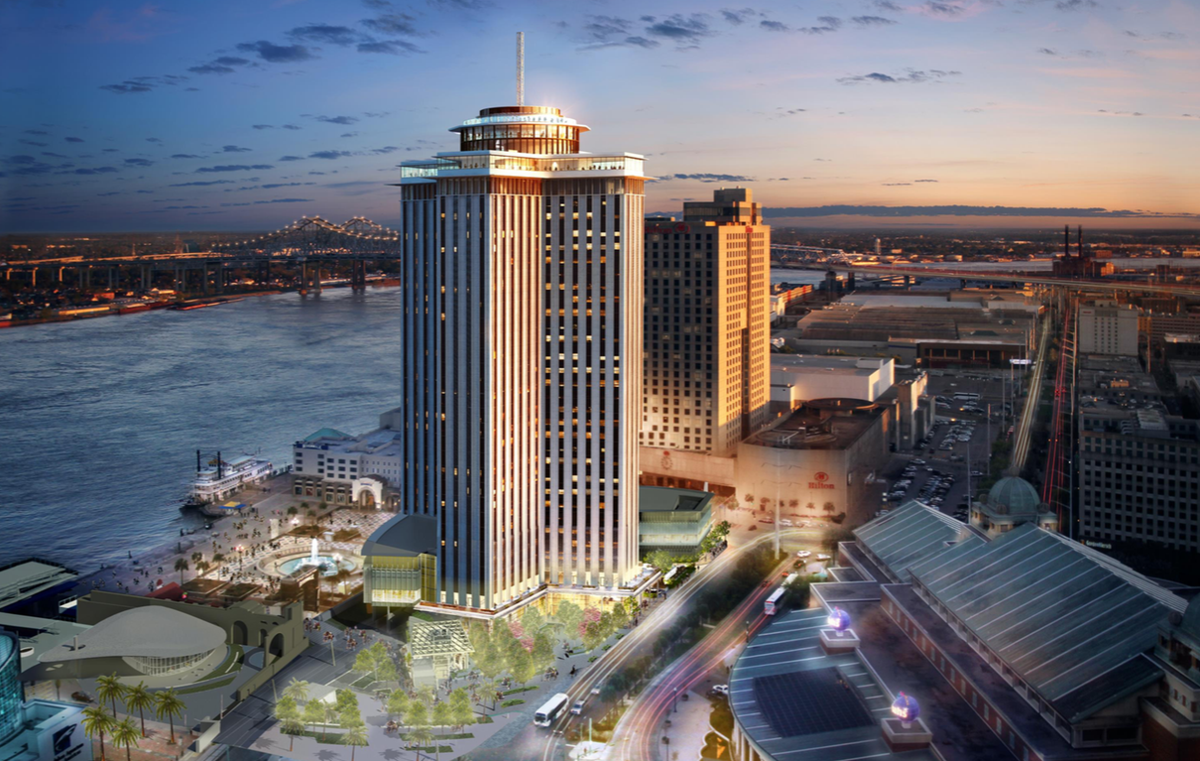
What the Four Seasons' opening means to New Orleans: a key milestone in its recovery
A decade after it was vacated and taken over by New Orleans government, the landmark skyscraper where Canal Street meets the Mississippi River is set for a spring unveiling as a top-of-the-line Four Seasons Hotel and Private Residences.
The $530 million renovation of the former World Trade Center, which will have taken three years to complete after decades of false starts, was targeted by former Mayor Mitch Landrieu as one of the city’s most significant developments after Hurricane Katrina. Transforming the building from an unoccupied shell to a model of chic opulence, it was argued, would be a key milestone in New Orleans’ progress and continued recovery from the 2005 storm.
Now, with the coronavirus pandemic straining New Orleans’ hospitality sector to its breaking point, the long-delayed launch of a new hotel at the very top end of the market has taken on added weight for the city.
Mali Carow, a Four Seasons veteran who was picked last year to be the hotel’s general manager, said the delays have given her more time to settle into New Orleans and to think about the place she hopes the Four Seasons will occupy in the city’s hospitality ecosystem once normalcy returns.
“What I’m hoping is that once we get through this challenging time, we’ll be a place that all of New Orleans wants to come and have a celebration,” she said. “New Orleans likes to celebrate, and this has been a tough year.”
The World Trade Center was designed by Edward Durrell Stone, a famed mid-20th Century architect who also designed the Museum of Modern Art in New York and the John F. Kennedy Center for the Performing Arts in Washington. It was completed in 1967 and was originally known as the International Trade Mart.
Once a premier New Orleans office location, it was hit hard by the 1980s oil bust and by the late 1990s was being considered for redevelopment. Those plans foundered over the course of a decade, and in 2010 City Hall considered demolishing the building.
By 2014, the Landrieu administration had received 11 proposals from developers seeking to transform the site. The Four Season consortium was selected in 2015. Lawsuits held up construction until 2017.
The development is part of the larger urban waterfront revival plan aimed at breathing new economic life into New Orleans downtown area, similar to conversions of wharf areas in cities such as Nashville, Tennessee, and Baltimore into bustling hubs. Spanish Plaza, which is undergoing a $7.5 million facelift of its own, connects to the riverfront side of the new hotel.
The success of the Four Seasons will, of course, require a revival of the city’s crippled hospitality industry, which has virtually ceased since the coronavirus shutdowns began in March.
But local officials hope the luxury appeal of the Four Seasons will quickly draw tourists once restrictions are lifted. Stephen Perry, CEO of the city’s tourism marketing organization, New Orleans & Co., said the affluent end of the market typically is the most robust.
“Our research shows that the traveler sentiment is best among those in the luxury market,” said Perry, adding that luxury travel was seeing high single-digit annual growth before the pandemic.
Market research firm Allied Market Research forecast last year that culinary-driven luxury destinations such as New Orleans would do especially well, growing through 2026 at a clip of almost 10% a year.
Still, Perry adds, a property such as the Four Seasons depends on the return of gatherings like company board meetings and high-end conferences for surgeons and the like — travel that has all but disappeared due to the pandemic.
“I think you’re going to see us making some incremental gains into the first two quarters next year, but nothing that resembles 2019 levels until the point at which we get a vaccine and it is administered to large segments of the U.S. population,” Perry said.
The Four Seasons owners are banking on that happening in time to open in the spring.
View Article
